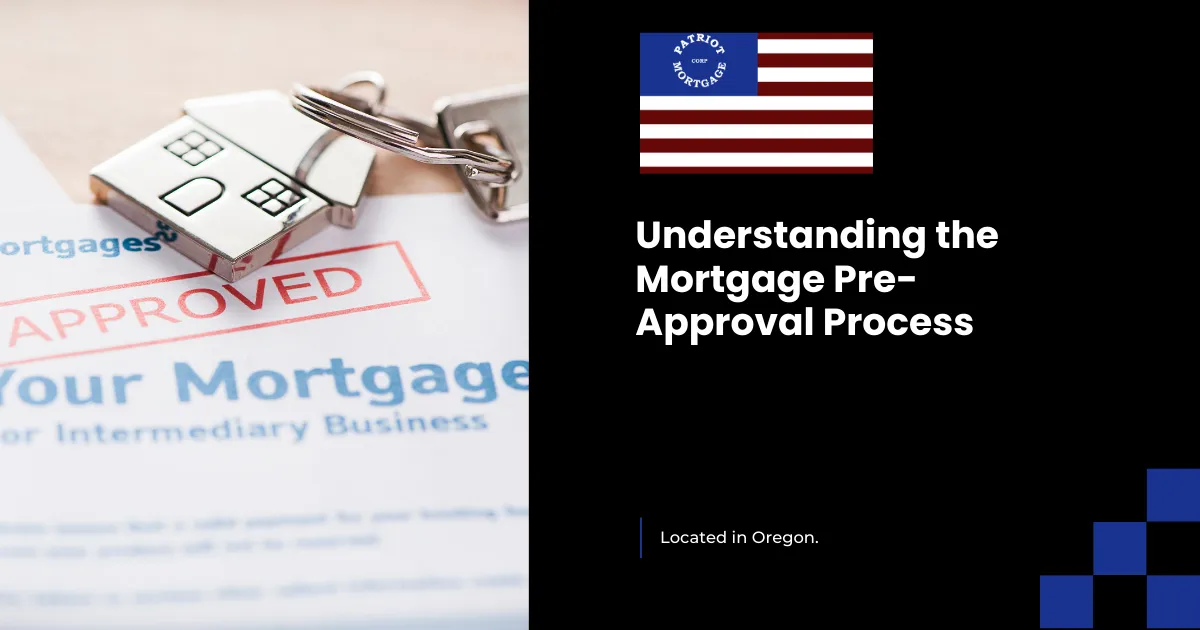
Understanding the Mortgage Pre-Approval Process: A Step-by-Step Guide
If you're preparing to buy a home, one of the first steps you'll want to take is getting pre-approved for a mortgage. A pre-approval gives you a clear idea of how much you can afford, strengthens your offer when bidding on a home, and speeds up the final loan process once you find the right property. Here’s everything you need to know about the pre-approval process.
What is a Mortgage Pre-Approval?
A mortgage pre-approval is a lender’s commitment to lend you a specific amount of money based on your financial situation. Unlike pre-qualification, which provides a general estimate, a pre-approval involves a thorough review of your financial documents, making it more reliable when negotiating with sellers.
Step-by-Step Pre-Approval Process
1. Gather Your Financial Documents
Lenders will ask for several key documents to verify your income, assets, and debt. These typically include:
Proof of Income: Recent pay stubs, W-2 forms (for the past two years), and tax returns.
Proof of Assets: Bank statements for checking, savings, and investment accounts.
Credit Report Authorization: The lender will need to pull your credit report to assess your credit score and history.
Identification: A government-issued ID, such as a driver’s license or passport.
Reference Link: https://www.consumerfinance.gov/ask-cfpb/what-documents-do-i-need-to-get-a-mortgage-preapproval-en-116/
2. Review Your Credit
Your credit score is one of the most critical factors in the pre-approval process. Generally, a score of 620 or higher is required for conventional loans, though FHA and VA loans may allow lower scores. If your credit score needs improvement, it may be wise to take some time to boost it before proceeding.
Reference Link: https://www.myfico.com/credit-education/mortgage-rates
3. Complete the Mortgage Application
Once you’ve gathered your documents, you’ll need to fill out a mortgage application (also known as Form 1003). This form includes information about your income, employment history, assets, liabilities, and the property you intend to buy (if you’ve chosen one).
Reference Link: https://www.investopedia.com/terms/u/uniform-residential-loan-application.asp
4. Lender Review and Pre-Approval Decision
The lender will review your financial documents, credit history, and debt-to-income ratio (DTI) to determine whether you qualify for a loan and how much you can borrow. This process usually takes a few days to a week.
Debt-to-Income Ratio: Most lenders prefer a DTI below 43%, though some may allow higher ratios depending on other factors.
Loan-to-Value Ratio (LTV): The lender may also assess the loan amount relative to the home’s value, especially if you’ve already chosen a property.
Reference Link: https://www.rocketmortgage.com/learn/debt-to-income-ratio
5. Receive Your Pre-Approval Letter
If approved, the lender will issue a pre-approval letter, which states the loan amount you qualify for. This letter can be presented to sellers to demonstrate that you’re a serious buyer with financing ready to go.
Reference Link: https://www.bankrate.com/mortgages/what-is-a-mortgage-preapproval/
Benefits of Getting Pre-Approved
Stronger Negotiating Power: Sellers are more likely to accept offers from pre-approved buyers because it shows you’ve already been vetted by a lender.
Clear Budget: Pre-approval gives you a clear idea of what you can afford, helping you shop for homes within your price range.
Faster Closing Process: Since much of the paperwork is already completed, the loan process moves faster once your offer is accepted.
Better Loan Terms: Pre-approval can help you lock in an interest rate, which can be advantageous if rates are rising.
Common Mistakes to Avoid During Pre-Approval
Applying for New Credit: Avoid opening new credit accounts or taking on new debt, as this can affect your credit score and DTI.
Changing Jobs: Stability is key during the pre-approval process. Switching jobs can raise red flags for lenders.
Making Large Deposits Without Documentation: Unexplained large deposits can delay the process. Be prepared to provide documentation for any non-regular deposits.
Not Shopping Around for Lenders: Different lenders offer different rates and terms. Getting multiple pre-approvals can help you find the best deal.
When Should You Get Pre-Approved?
It’s generally best to get pre-approved shortly before you start house hunting. Pre-approval letters are typically valid for 60 to 90 days. If you haven’t found a home within that period, you may need to update your financial information and get a new pre-approval letter.
Conclusion
The mortgage pre-approval process is an essential step toward homeownership. It not only provides a clear understanding of your budget but also strengthens your position when making offers. If you're ready to start the pre-approval process or have questions, reach out to me, Richard Stark. I’m here to guide you through every step of your home-buying journey.
Social Media Links
YouTube



